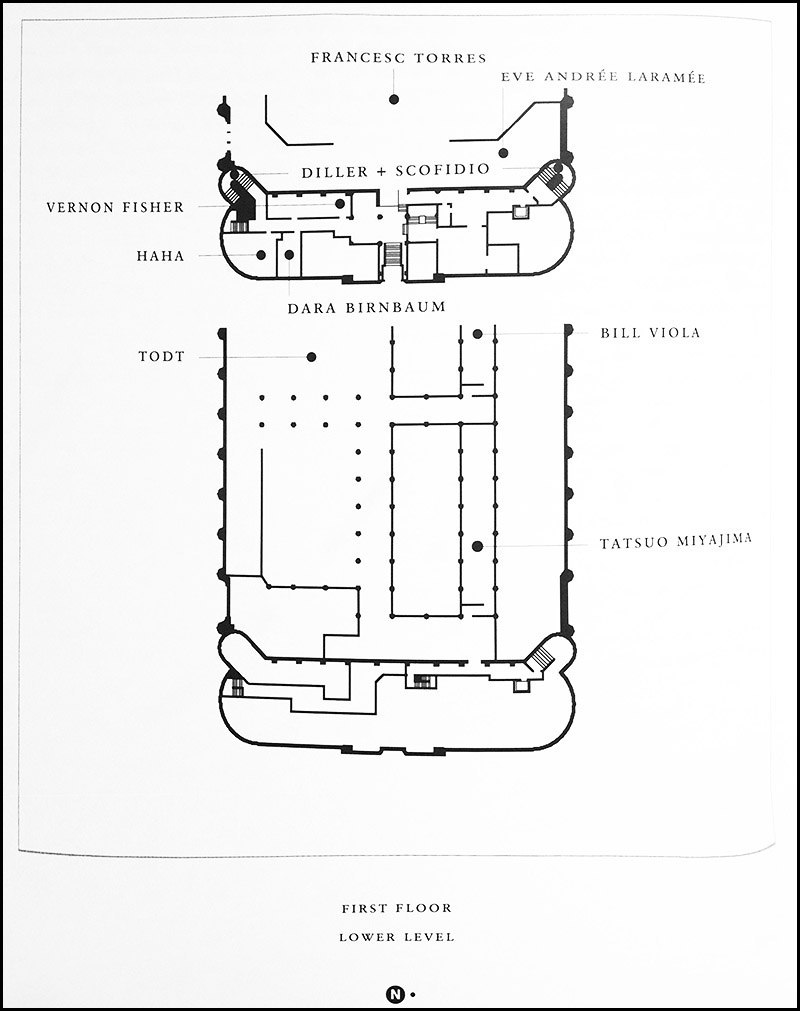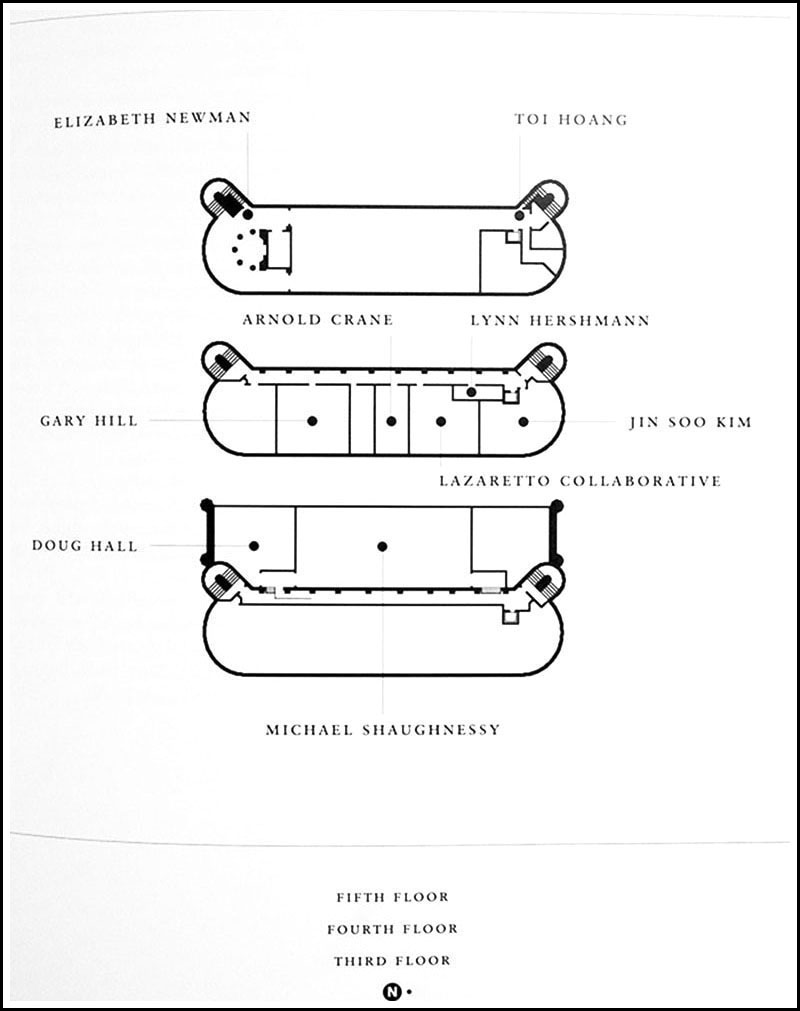These diagrams illustrate the layout of the armory and indicate the locations of the 18 installations. The capsule shape identifies the original (1919) eastern portion of the buidling that extended westward in two additions, first in 1925 and then in 1940. See full floor plans here. The illustrations appear in Art at the Armory: Occupied Territory (Chicago: Museum of Contemporary Art Chicago, 1992, pp. 52-53) |
|
 |
 |
At the lower level of the armory building, originally an area used as horse stables, three different installations utilized what earlier had also served as a parking garage, lockers rooms, and a 2000 square foot rifle range. |
At the east end of the armory's third floor, a gymnasium spanned the width of the building with locker rooms at either end. In "Two Rings/ Gathered Rising," Michael Shaughnessy fabricated two doughnut-shaped hay rings that stood nearly to the ceiling, filling the room and echoing the curved lines of the basketball court. In my conversation with Helen Dunbeck, the MCA's director of administration, she spoke of the logistics of dealing with city officials and the Chicago Fire Department in seeking clearance for Shaughnessy's installation. At the south end of the third floor, in a space originally used as a locker room, Doug Hall created a harrowing installation complete with cataclysmic videos and manufactured lightning. For "The Terrible Uncertainty of the Thing Described," in a room with six pole-mounted video monitors and a large video projection, Hall positioned two chairs behind a mesh wall. In Nadine Wasserman's catalogue essay, she describes the scenario: "A mesh fence encloses two steel chairs and a tesla coil transformer that generates a million-volt high-frequency current spiders out like lightening every half hour." Upstairs, on the fourth floor, which at one time served as space for the 131st Infantry's Combat support company, five artists took over individual rooms. Gary Hill put video monitors on the floor to create "Inasmuch As It Is Always Taking Place." Arnold Crane, Lynn Hershmann, and Jin Soo Kim each used rooms as traditional exhibition spaces. Crane showed large photographs, ("Reality in Macrocosm"); Hershmann presented an interactive video ("Deep Contact"); and Jin Soo Kim created abstract sculptural works ("Sentient Plexus"). The Lazaretto Collaborative created an AIDS themed installation that included handwritten instances of injustices on papers lining the walls that were meant to raise AIDS awareness. At one end of the the fifth floor attic space, Toi Hoang leaned painted, and charred hospital stretchers along the walls and on the floor for his "Stretcher Series." And, at the other end of the top floor, Elizabeth Newman presented, "Histories of Human Flesh," an installation that featured frozen breast milk, a permeating baby powder fragrance, and a children's choir playing on an antique gramophone. |